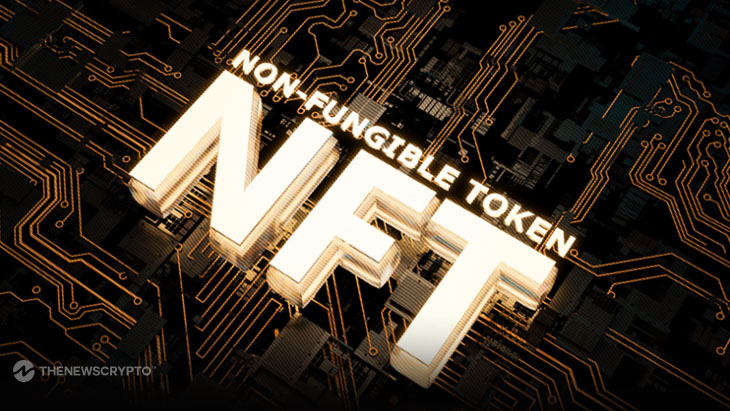Non-fungible tokens (NFTs) have come a long way since Beeple’s $69 million digital art sale made waves across the digital asset industry. Although the crypto ‘winter’ of 2022 has not spared this emerging ecosystem, the latest Dapp Radar report reveals that the NFT market recorded $2.9 billion in trading volumes during Q2 2023.
However, what is particularly intriguing to observe is the rapid evolution of NFTs. NFTs are transitioning from mere JPEG collections to utility-powered digital collectibles, with fashion brands like Nike and Adidas joining the trend by launching their own NFTs. Furthermore, upcoming NFT-powered social apps like Peer are poised to reshape digital interactions in today’s interconnected world.
Following these latest developments, the big question is: will utility-oriented NFTs drive the next bull run, and if so, what are some of the applications already in motion? As an avid fan of the NFT ecosystem and its value proposition, I would argue that it is not solely about the bull run but rather about setting the stage for an asset class that will bridge the gap between the real world and virtual economies.
That said, as it stands, the trends show that the next wave of NFT adoption will likely be triggered by utility-focused applications. In fact, this is already in motion, with several traditional industries building or integrating utility NFTs to enhance their value, as we will highlight in the next section.
Utility NFTs: From JPEGs to Real Value
Like any new technology, it takes several years of experimentation to find the perfect product-market fit for mass adoption, and the same holds true for NFTs. Initially, the hype centered around owning a unique JPEG from renowned collections like the Bored Ape Yacht Club (BAYC), Cryptopunks, or Azuki, but that is no longer the primary focus.
Capital is gradually shifting towards real value, with notable advancements in tokenizing real-world assets (RWAs) through NFT technology. Ideally, NFTs are being utilized to represent tangible assets such as property, stocks, and private equity on the blockchain. According to estimates by the Boston Consulting Group (BCG), this emerging market could reach $16 trillion by 2030.
Already some heavyweight players in the legacy banking system, including Golman Sachs have acknowledged the untapped potential and are exploring tokenizing financial instruments,
“We are actually exploring NFTs in the context of financial instruments, and actually there the power is actually quite powerful,” – Mathew McDermott, global head of digital assets at Goldman Sachs.
Meanwhile, in the fashion industry, NFT wearables are emerging as a popular trend, with notable brands like Adidas and Nike all venturing into the realm of digital collectibles. Adidas, for instance, has been expanding its digital fashion footprint having partnered with BAYC back in 2021. Today, Adidas showcases various digital collections, with the Adidas Virtual Gear Genesis collection being particularly noteworthy.
What sets these fashion NFTs apart is their enhanced customizability compared to traditional JPEG NFTs. Owners have the ability to style their profile pictures (PFP) and enjoy additional perks such as exclusive club memberships and access to special product releases.
Shaping the Future of Social Applications
Of course, the discussion on the transformative nature of NFTs would not be complete without highlighting the advancements in the realm of social media.
While Mark Zuckerberg’s Horizon World metaverse did not prove successful, NFT-powered social apps like the one envisioned by Peer hold immense potential in enhancing our daily interactions.
At its core, this Web3 social app introduces a digital realm that utilizes augmented reality (AR), enabling users to connect and virtually explore destinations that may otherwise be inaccessible to them in the real world. Furthermore, Peer’s web3 social app enhances the experience by allowing users to drop or mint digital assets in real-world locations, providing an opportunity for users to derive real-world benefits while virtually exploring the world.
On the other hand, as NFTs quietly disrupt the social media realm, Web2 giants, particularly Twitter and Facebook, continue to battle it out for dominance. What they seem to be oblivious to is the potential emergence of NFT-powered social apps as a more formidable force, albeit gradually. With both innovators and users exploring their options, it would not be surprising if the next generation of social apps is built on NFT technology.
Conclusion
With the macro conditions still uncertain, the crypto market is evidently not yet fully out of the woods, but it is in times like these that innovators do the real building. NFTs are clearly emerging as a futuristic innovation and perhaps the most solid value yet provided by decentralized applications. What was uncertain is slowly becoming clearer – NFTs were not meant to be just JPEGs but digital collectibles that can actually transform today’s industries. And what better time to keep up with the developments than when the crypto waters are still calm.








